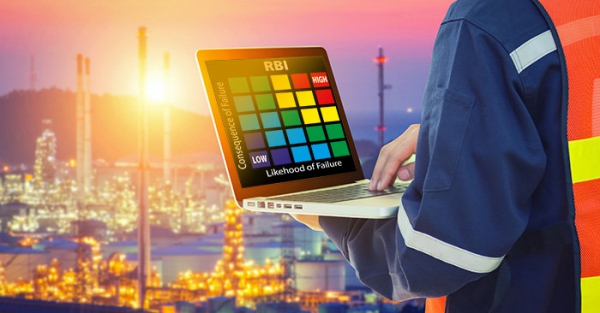News:
Risk Based Inspection (RBI) Services

Aria Azmoon Sanat Company, in order to respond to the needs of oil, gas, petrochemical and refining industries in order to manage risk and prioritize inspection of pressurized equipment based on their risk, provides risk-based inspection (RBI) services using experienced professionals and has used advanced equipment and software.
RBI is a new method in inspection management that is used based on statistical analysis of information obtained from monitoring operations in an operational process in order to optimize the inspection program and costs.
In summary, in the RBI method, first the probability and result of failure of pressure equipment is calculated and by multiplying these two factors, ie (probability and consequence), the amount of risk is obtained. Then, based on the size of the risks obtained, the equipment is prioritized and the inspection program is defined for them.
In this method, unlike traditional inspection methods, a fixed time interval is not defined for equipment inspection, but each equipment has a separate time interval and method for inspection. In fact, this can avoid repeated inspections and instead focus inspection facilities and capabilities on higher-risk equipment.
The implementation steps of RBI services are as follows:
- Preparation of RBI policy in the applicant company
- Collect and record equipment information
- Design of corrosion circuits
- Assess the consequences of failures
- Technical inspection planning
Having information about the probability of failure and the result of failure of each unit can determine the risk position of the system under study in a risk matrix of 5˟5. This matrix has four regions. Once the results of the evaluation of all units or systems on the matrix have been determined, the units can be classified according to the risks obtained and the need or not for further evaluation and the urgency of the evaluation can be determined. The results of the risk matrix can be used to identify potentially hazardous areas and decide which part of the process unit needs the most attention in terms of inspection or other methods of risk reduction.
Advantages of using RBI method:
- Increase the safety and reliability of equipment
- Reduce scheduled and unplanned stops
- Increase inspection and overhaul intervals
- Identify potentials for failure
- Identify process parameters affecting corrosion
- Reduce inspection, repair and maintenance costs
- Special attention and focus on critical equipment and prioritization of equipment for inspection and repair
- Risk and exploitability studies is a new method based on the collection and statistical analysis of data resulting from the operation, maintenance, technical inspection and monitoring of the situation in a refinery or petrochemical complex where the risk of operating units, various equipment and lines is calculated and determined based on the latest version of API 581 standard, in order to carry out maintenance and repair plans and technical inspections in order to increase their effectiveness and efficiency, and consequently increase safety and economic production.


